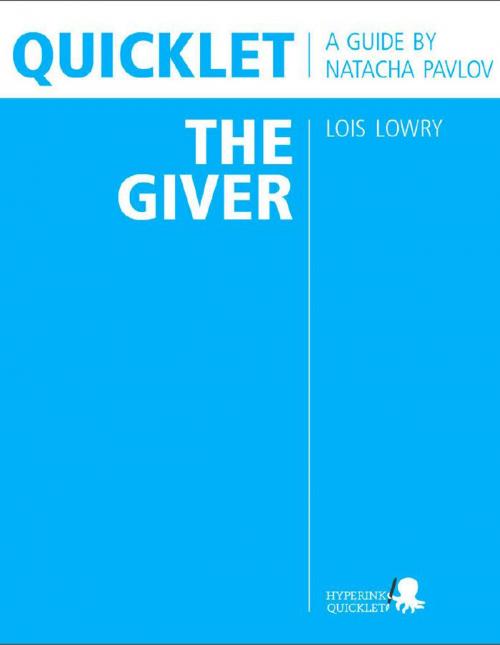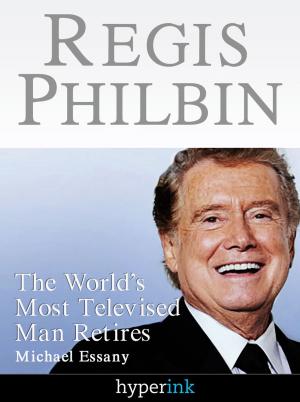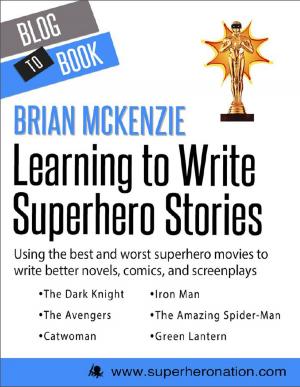Quicklet on Lois Lowry's The Giver (CliffNotes-like Summary & Analysis)
Nonfiction, Reference & Language, Study Aids, Book Notes, Art & Architecture, General Art| Author: | Natacha Pavlov | ISBN: | 9781614645177 |
| Publisher: | Hyperink | Publication: | July 30, 2012 |
| Imprint: | Hyperink | Language: | English |
| Author: | Natacha Pavlov |
| ISBN: | 9781614645177 |
| Publisher: | Hyperink |
| Publication: | July 30, 2012 |
| Imprint: | Hyperink |
| Language: | English |
ABOUT THE BOOK
What comes to mind when you envision a perfect society? Does it consist solely of happiness and peace? Are there equal rights for everyone regardless of gender, age and/or ethnic background? What about the weather, wildlife and natural landscapes? Is there a limit to the number of children families can have, or even to how they go about producing them? Is there a fair judicial system in place?
Lois Lowry’s The Giver tells the story of such a utopian society in which twelve-year old Jonas is the main character. Although his society might at first seem perfect and balanced—there are, after all, no feelings, hunger, inequalities or pain—Jonas eventually realizes that his community has been missing out on all that life has to offer, calling into question the very concept of “ideal.”
The Giver, Lois Lowry’s 21st novel, was published in 1993 and earned a Newbery Medal in 1994, “[becoming] an almost instant classic.” As a novel of the utopian genre written in 23 chapters and from a third-person perspective, the story follows Jonas’ life in his perfect society as he progresses from an innocent eleven-year old to a wise twelve-year-old Receiver of Memories. It is easy to wonder exactly how Lois Lowry came up with such a concept, and the truth is that “inspirations for The Giver are so varied” that it can be challenging to give a short answer. As she states in detail in her 1994 Newbery Acceptance speech, her childhood in Japan, her college years, her father’s aging and reaction to losing one of his daughters, and her parents’ attempts to adjust to constant moves all played a part in creating the storyline. In reference to her writing of The Giver, Lowry recalled, “In the beginning to write The Giver I created – as I always do, in every book – a world that existed only in my imagination – the world of ‘only us, only now.’ I tried to make Jonas’s world seem familiar, comfortable, and safe, and I tried to seduce the reader. I seduced myself along the way. It did feel good, that world. I got rid of all the things I fear and dislike; all the violence, prejudice, poverty, and injustice, and I even threw in good manners as a way of life because I liked the idea of it.”
Although Jonas’ society is clearly different from our own, Lowry was also able to leave quite a few things up to interpretation without confusing her readers. For example, it is ambiguous whether animals actually exist in Jonas’ society, while the lack of feelings and sexual attraction within his community seem to hint at the possibility of artificial insemination. Many have also been puzzled by the novel’s ambiguous conclusion, but Lowry has remained adamant about not shedding light upon the story’s ending. She states: “I really believe that every reader creates his/her own book, bringing to the written words their own experiences, dreams, wishes, passions. For me to explain everything from my own viewpoint limits that experience for the reader.”
Regardless of the interpretations, Lowry seems to have fashioned many of her novels with certain concepts in mind. As she says: “My books have varied in content and style. Yet it seems that all of them deal, essentially, with the same general theme: the importance of human connections.” She has stated that The Giver “speak[s] to the same concern: the vital need of people to be aware of their interdependence, not only with each other, but with the world and its environment.”
...buy the book to read more!
ABOUT THE BOOK
What comes to mind when you envision a perfect society? Does it consist solely of happiness and peace? Are there equal rights for everyone regardless of gender, age and/or ethnic background? What about the weather, wildlife and natural landscapes? Is there a limit to the number of children families can have, or even to how they go about producing them? Is there a fair judicial system in place?
Lois Lowry’s The Giver tells the story of such a utopian society in which twelve-year old Jonas is the main character. Although his society might at first seem perfect and balanced—there are, after all, no feelings, hunger, inequalities or pain—Jonas eventually realizes that his community has been missing out on all that life has to offer, calling into question the very concept of “ideal.”
The Giver, Lois Lowry’s 21st novel, was published in 1993 and earned a Newbery Medal in 1994, “[becoming] an almost instant classic.” As a novel of the utopian genre written in 23 chapters and from a third-person perspective, the story follows Jonas’ life in his perfect society as he progresses from an innocent eleven-year old to a wise twelve-year-old Receiver of Memories. It is easy to wonder exactly how Lois Lowry came up with such a concept, and the truth is that “inspirations for The Giver are so varied” that it can be challenging to give a short answer. As she states in detail in her 1994 Newbery Acceptance speech, her childhood in Japan, her college years, her father’s aging and reaction to losing one of his daughters, and her parents’ attempts to adjust to constant moves all played a part in creating the storyline. In reference to her writing of The Giver, Lowry recalled, “In the beginning to write The Giver I created – as I always do, in every book – a world that existed only in my imagination – the world of ‘only us, only now.’ I tried to make Jonas’s world seem familiar, comfortable, and safe, and I tried to seduce the reader. I seduced myself along the way. It did feel good, that world. I got rid of all the things I fear and dislike; all the violence, prejudice, poverty, and injustice, and I even threw in good manners as a way of life because I liked the idea of it.”
Although Jonas’ society is clearly different from our own, Lowry was also able to leave quite a few things up to interpretation without confusing her readers. For example, it is ambiguous whether animals actually exist in Jonas’ society, while the lack of feelings and sexual attraction within his community seem to hint at the possibility of artificial insemination. Many have also been puzzled by the novel’s ambiguous conclusion, but Lowry has remained adamant about not shedding light upon the story’s ending. She states: “I really believe that every reader creates his/her own book, bringing to the written words their own experiences, dreams, wishes, passions. For me to explain everything from my own viewpoint limits that experience for the reader.”
Regardless of the interpretations, Lowry seems to have fashioned many of her novels with certain concepts in mind. As she says: “My books have varied in content and style. Yet it seems that all of them deal, essentially, with the same general theme: the importance of human connections.” She has stated that The Giver “speak[s] to the same concern: the vital need of people to be aware of their interdependence, not only with each other, but with the world and its environment.”
...buy the book to read more!















